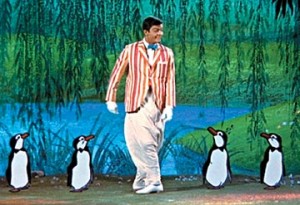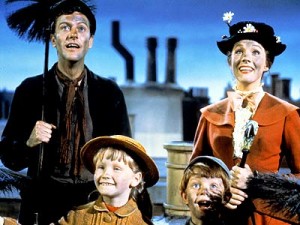Bobby Jones, Stroke of Genius
Posted on April 30, 2004 at 6:28 am
C| Lowest Recommended Age: | Middle School |
| Profanity: | Strong language for a PG |
| Alcohol/ Drugs: | Drinking and smoking, mild sexual references |
| Violence/ Scariness: | Tense scenes, health problems |
| Diversity Issues: | Depictions typical of the era portrayed |
| Date Released to Theaters: | 2004 |
Bobby Jones was a great man and a great golfer. He deserves a better movie than this one, as clumsy as its title.
Jones may be the greatest golfer who ever lived. He’s the only one to win all four of golf’s top titles in the same year. And he was an extraordinary man. He overcame physical problems and family pressures. He graduated from two colleges and received a master’s degree and a law degree. And Jones refused to be paid for playing golf and turned down millions of dollars in endorsements and awards. He liked to point out that the word “amateur” comes from the Latin word for love. He played for love of the game.
And clearly, this movie was made for love of the game and for love of Jones, but it tells us rather than showing us, and then tells us again, and it takes a very long time doing it, too. Like the game it depicts, it moves very, very slowly. There are lots of long, long, loving shots of the sun-dappled greens, slow-mo swings and swelling strings, glimpses of golden light accompanied by hooting panpipes, and quotes from Kipling, Will Rogers, Tennyson, and then Kipling again. I know it’s a long movie, but really, we can remember it from the first time.
We meet Jones as a sickly child, growing up next door to a golf course, imitating the swings of the men who play and attracting the attention of the Scottish golf pro. He enters his first big tournament as a teenager. A skeptical journalist becomes an awestruck fan. Cue the swelling strings again.
Jones has a temper. When a shot goes bad, he swears and throws his club. “There are some emotions that can’t be endured with a golf club in your hands.” His grandfather, Robert Jones Senior, disapproves of his playing golf. His mother wants him to study literature. Later on, his wife wants him to spend more time with the family. He keeps getting sick. But he will not give up until he has won the grand slam of the four top titles.
The movie is nice to look at, and Jeremy Northam as the dissolute but resolute Walter Hagan adds some flavor to the story. But the other performances are as flat as the dialogue.
Parents should know that the movie has strong language for a PG and a child uses four-letter words. Jones’ swearing is an issue in the story and ultimately he learns not to do it any more. There are some brief mild sexual references (a character is teased that she “doesn’t pet,” a man is said to have broken “all eleven” of the ten commandments and refers to debauchery). Characters drink and smoke, sometimes to excess. The portrayal of minorities is consistent with the era, but may be seen as insensitive by today’s standards. (No mention is made of Jones’ Augusta Golf Club’s famous battles to keep women from becoming members.)
Families who see this movie should talk about the comment by one character that “money is going to ruin sports.” Was he right? They should all read Kipling’s classic poem If, still fine advice about growing up for boys or girls. And they should talk about the question asked of Jones at the end of the movie, “What are you going to do for yourself?” What did he do for himself, and why?
Families who enjoy this movie will also enjoy The Legend of Bagger Vance, with actors playing Jones and Hagan. Other golf movies include Pat and Mike and Caddyshack. Jones himself appeared in some short films demonstrating his stroke and they are available on video.


